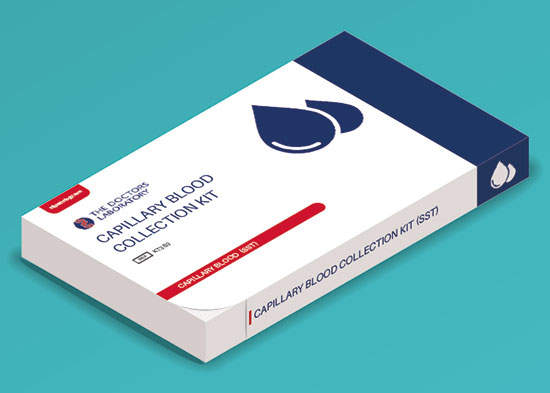The Vitamin D (25-hydroxy) blood test, commonly referred to as the 25(OH)D test, measures the level of vitamin D in the blood. This test is crucial for diagnosing vitamin D deficiencies and ensuring adequate levels for overall health. Here’s a comprehensive overview of the Vitamin D (25 OH) blood test:
Blood Test Cost – £69
What is Vitamin D?
Vitamin D is a fat-soluble vitamin that plays a vital role in:
- Calcium absorption and bone health
- Immune system function
- Muscle function
- Cardiovascular health
The body produces vitamin D when the skin is exposed to sunlight. It can also be obtained from certain foods and supplements.
Why is the Vitamin D (25 OH) Test Done?
The 25(OH)D test is performed to:
- Diagnose Vitamin D Deficiency or Insufficiency: Low levels can lead to bone disorders such as rickets in children and osteomalacia or osteoporosis in adults.
- Monitor Treatment: Assess the effectiveness of vitamin D supplementation in individuals with known deficiencies.
- Evaluate Bone Health: Helps in assessing risk factors for osteoporosis and other bone-related conditions.
- Assess Overall Health: Low levels of vitamin D have been linked to various chronic conditions, including cardiovascular disease, diabetes, and certain cancers.
Vitamin D Metabolism
- 25-Hydroxyvitamin D [25(OH)D]: The main form of vitamin D circulating in the blood, which is the most accurate indicator of vitamin D status.
- 1,25-Dihydroxyvitamin D [1,25(OH)2D]: The active form of vitamin D, which is not typically measured for routine screening as its levels do not reflect vitamin D stores and can be influenced by other factors.
Test Procedure
- Blood Sample: A blood sample is drawn from a vein in your arm.
- Laboratory Analysis: The sample is sent to a laboratory to measure the concentration of 25(OH)D in the blood.
Interpreting Test Results
- Deficient: <20 ng/mL (50 nmol/L) – Indicates a need for supplementation and lifestyle changes.
- Insufficient: 20-29 ng/mL (50-74 nmol/L) – Suggests a risk of deficiency; improvement is needed.
- Sufficient: 30-100 ng/mL (75-250 nmol/L) – Adequate levels for bone and overall health.
- Potentially Harmful: >100 ng/mL (250 nmol/L) – May indicate vitamin D toxicity, typically due to excessive supplementation.
Factors Affecting Vitamin D Levels
- Sun Exposure: Limited sunlight exposure, especially in higher latitudes or during winter months.
- Skin Pigmentation: Darker skin has more melanin, which can reduce the skin’s ability to produce vitamin D from sunlight.
- Age: Older adults have a decreased ability to produce vitamin D.
- Diet: Limited intake of vitamin D-rich foods such as fatty fish, fortified dairy products, and egg yolks.
- Health Conditions: Certain medical conditions (e.g., kidney disease, liver disease, and malabsorption syndromes) can affect vitamin D metabolism.
Follow-Up and Next Steps
If your 25(OH)D levels are low, your healthcare provider may recommend:
- Increased Sun Exposure: Safely increasing exposure to sunlight.
- Dietary Changes: Incorporating more vitamin D-rich foods into your diet.
- Supplements: Vitamin D supplements, typically in the form of vitamin D2 (ergocalciferol) or vitamin D3 (cholecalciferol).
- Monitoring: Regular follow-up tests to monitor vitamin D levels and adjust supplementation as needed.
Benefits and Risks
- Benefits: Provides critical information for the prevention and treatment of bone disorders and other health conditions related to vitamin D deficiency.
- Risks: The test is low-risk, involving a simple blood draw. However, it’s important to manage vitamin D levels carefully to avoid toxicity from over-supplementation.
Conclusion
The Vitamin D (25 OH) blood test is a valuable tool for assessing vitamin D status and ensuring adequate levels for optimal health. Regular monitoring and consultation with your healthcare provider can help maintain appropriate vitamin D levels and prevent related health issues.
Results – 4hrs from Laboratory receiving sample
To Book with our Phlebotomist please click the calendar below and find a suitable time for your appointment
Vitamin D (25 OH) – Self Test Kit
Our test at home kit for Vitamin D (25 OH). A capillary blood sample collection…







